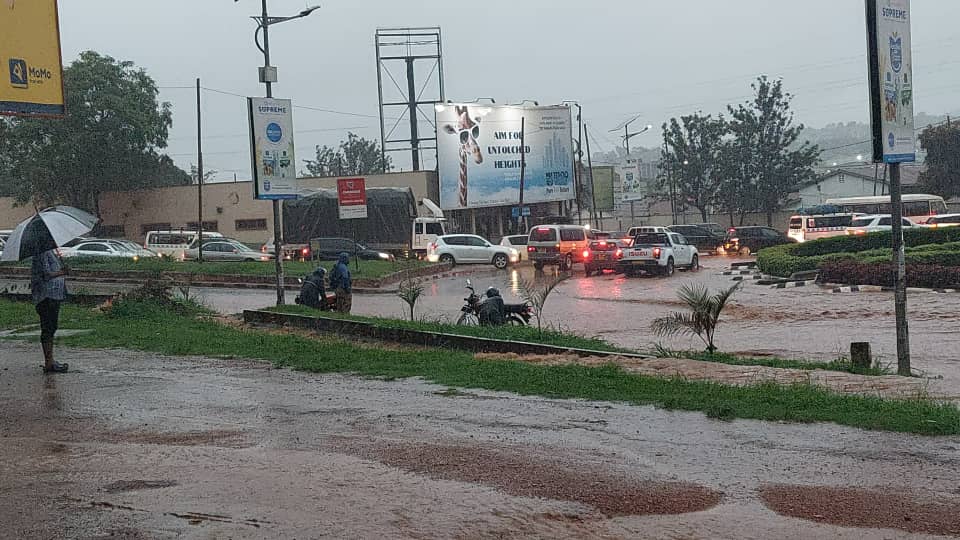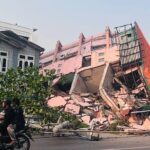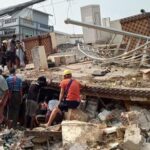Heavy rainfall on Wednesday morning caused severe flooding in the areas of Banda, Kyambogo, and Kinawataka (Katogo), rendering major roads impassable and causing significant disruptions to traffic flow.
The downpour, which began in the early hours, submerged key roadways, leaving motorists stranded and forcing others to seek alternative routes.
Traffic Police spokesperson Michael Kananura, in a public statement, urged motorists to avoid the flooded areas and use the Northern Bypass as an alternative route to prevent further congestion and delays. “Due to heavy rainfall this morning, the areas of Banda, Kyambogo, and Kinawataka (Katogo) have become impassable. Motorists are advised to use the Northern Bypass as an alternative route to avoid delays and inconveniences,” Kananura said.

He further urged patience from road users, emphasizing that movement in the affected areas would only resume once the floodwaters subside. “We understand the inconvenience this has caused, and we ask for cooperation from motorists. Safety remains our top priority, and we encourage drivers to exercise caution during this period,” he added.
The flooding caused widespread disruption, especially for commuters heading to work, students traveling to school, and traders transporting goods through the affected areas. In Banda, water levels rose to knee height, making it difficult for pedestrians to cross, while in Kyambogo, businesses near the roadside reported damage due to water seeping into their premises.
“I left home early to beat the traffic, but I got stuck at Kinawataka. The water levels are so high that even boda bodas can’t pass,” said Judith Namara, a commuter who was attempting to get to her workplace in the city center. “I had to call my boss and inform him that I would be late. This flooding has become a regular problem, and something needs to be done.”
Several drivers were also left stranded, with their vehicles breaking down due to water entering the engine. The flooded roads posed a serious risk, particularly to smaller vehicles, which struggled to navigate through the rising water.
“We have seen several cars stuck in the water. Some drivers are attempting to force their way through, but their vehicles stall midway,” said David Kagwa, a taxi driver who operates on the Banda-Kyambogo route. “This happens every time there is heavy rain because the drainage system cannot handle the volume of water.”
The flooding in these areas is part of a recurring issue in Kampala, where poor drainage systems and rapid urbanization have made the city increasingly vulnerable to waterlogging during heavy rains. Residents and local leaders have long called for improved drainage infrastructure to mitigate the effects of flooding
“We have raised this issue several times with the authorities,” said Sarah Mugisha, a local council leader in Kinawataka. “The drainage channels are either blocked by garbage or too shallow to handle the runoff. Until the government invests in a proper drainage system, these floods will continue to disrupt our lives and businesses.”
The Kampala Capital City Authority (KCCA) has previously acknowledged the need for better drainage but has cited funding constraints as a major challenge. However, many residents argue that the problem is worsening each year and requires urgent intervention.
“Every rainy season, we face the same problem. The floods damage our property, delay our work, and pose serious health risks. The authorities must prioritize fixing the drainage system before the next rainy season,” Mugisha added.
The impact of the flooding extended beyond traffic disruptions. Several small businesses along the affected roads suffered losses as water swept through their shops. In Banda, vendors reported damaged goods, while in Kyambogo, shop owners were seen using buckets to bail water out of their premises.
“Our shop was completely flooded. We have lost electronics worth millions of shillings,” said Joseph Kato, who owns a small appliance store in Kyambogo. “We can’t keep absorbing these losses every time it rains.”
Schools in the affected areas also experienced disruptions. Some students could not reach their schools due to impassable roads, while others were sent home early to avoid being stranded by rising waters.
In response to the situation, the Traffic Police and Kampala Capital City Authority (KCCA) have deployed teams to monitor the affected areas and clear any blockages in drainage channels.
“We are working closely with KCCA to address the situation. Teams are on the ground assessing the extent of the damage and unblocking key drainage channels to allow water to flow,” Kananura said.
The government has previously outlined plans to rehabilitate Kampala’s drainage systems under the Kampala Drainage Master Plan. However, progress on these projects has been slow, with many residents expressing frustration at the lack of visible improvements.
Environmentalists have also warned that unchecked urbanization and poor waste management contribute to the city’s flooding problem. Garbage dumped in drainage channels reduces their capacity to handle runoff, leading to overflow during heavy rains.

“The problem is not just the rain. It is how we manage our environment,” said environmental activist Joan Kirabo. “If we continue to clog drainage systems with plastic waste and fail to plan for urban growth, flooding will only get worse.”
As the rainy season continues, residents and businesses in Banda, Kyambogo, and Kinawataka remain on edge, fearing further disruptions. While the immediate priority is restoring normal traffic flow, many are calling for long-term investments in infrastructure to prevent future flooding.
For now, the Traffic Police continue to advise caution, urging motorists to avoid flooded areas and use alternative routes where possible. However, until systemic issues are addressed, the threat of flooding will remain a persistent challenge for Kampala’s residents.







